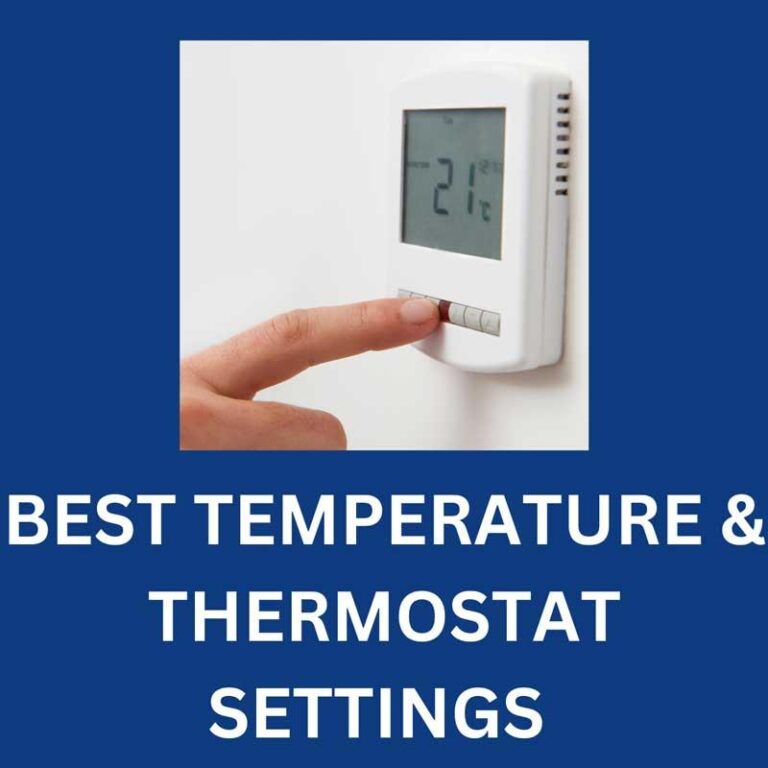Finding the Perfect Thermostat Setting for Summer Comfort and Efficiency
As summer heat envelops the country, homeowners often grapple with a familiar dilemma: identifying the ideal thermostat setting that balances comfort with energy efficiency. With electricity costs on the rise and an increasing focus on eco-friendliness, pinpointing the best temperature for your air conditioning system is more critically important than ever. This article draws insights from HVAC professionals and energy conservation experts to uncover optimal thermostat settings that can help you stay comfortable while saving money. We will delve into practical advice and expert suggestions to help you beat the heat this summer.
Ideal Thermostat Settings for Summer Comfort
Choosing the right thermostat temperature can substantially enhance your comfort during sweltering summer days. Experts typically recommend setting your thermostat to 78°F (around 25-26°C). This temperature provides a harmonious balance between personal comfort and energy savings,ensuring your home remains cool without causing a spike in electricity expenses. Additionally, it’s vital to consider other factors affecting indoor climate such as humidity levels and airflow. By optimizing these aspects and effectively using fans alongside your air conditioning unit,you can amplify cooling effects without straining your system.
Here are some key strategies for achieving optimal comfort:
- Increase Gradually: Raising your thermostat by just one degree could lead to savings of up to 3% on cooling costs.
- employ Programmable Thermostats: These devices allow automatic adjustments throughout the day based on occupancy patterns.
- Curtains Closed: Keeping blinds or curtains shut during peak sunlight hours helps lower indoor temperatures further.
- Maintain Your System: Regular upkeep of your HVAC system ensures it operates at peak efficiency.
| thermostat Setting | User Comfort Level | Savings Potential |
|---|---|---|
| 78°F | Ideal comfort | Savings of 3-5% |
Expert Tips for Energy Efficiency in Hot Weather
The arrival of summer prompts energy specialists to stress finding a comfortable yet efficient thermostat setting. The U.S. Department of Energy suggests maintaining an indoor temperature around 78°F (26°C), especially when you’re awake at home.This approach not only enhances comfort but also significantly reduces energy consumption, leading to lower utility bills overall. When leaving home, raising the thermostat by several degrees—up to about 85°F (29°C)—can yield considerable savings in energy use.
If you’re looking for additional ways to boost efficiency this summer, consider these recommendations:
- Circulate Air with Ceiling Fans:Create a wind chill effect that makes warmer temperatures feel cooler.
- Keeps Blinds Closed During Daylight Hours:This prevents solar heat gain inside your home.
- Schedule Regular Maintenance: Ensure that all components of your HVAC system are functioning optimally.
- Invest in Smart Technology: A programmable or smart thermostat allows precise control over heating/cooling schedules.
- Schedule Regular Maintenance: Ensure that all components of your HVAC system are functioning optimally.
A swift reference table summarizing recommended settings is provided below :
| Situation | Suggested Temperature |
|---|---|
| At Home , Awake | 78 °F (26 °C) |
Health Considerations Related To Temperature Choices In Hot Weather
Selecting an appropriate temperature setting on hot days has notable implications for health . Prolonged exposureto high temperatures may resultin variousheat-related ailments suchasheat exhaustionandheat stroke.maintainingyourhomewithinacomfortableandsafe rangeof75° Fto78° Fisessentialforreducingthe riskof dehydrationandoverheating.Thistemperature range notonlyensuresphysicalcomfortbutalsoalleviatesstressonthecardiovascularsystemwhichcanbeespeciallychallengingduringextremeweatherconditions.
Moreover,inadequatetemperaturecontrolscanaggravateexistinghealthissueslike<strong respiratory conditionsand cardiovascular diseases.Excessivelylowtemperaturesmaycausehypothermiaamongvulnerableindividualswhilehighertemperaturescouldtriggerasthmaattacksorintensifyallergiesduetoindoorairpollutants.Herearesomeimportantconsiderations:
<b humidity Control :Settingyourthermostattoo lowmayresultinhighhumiditylevelswhichincreasesthelikelihoodofmoldgrowth.
<b Air Quality :Regularlychangingairfiltersandmaintainingventilationsystemsimprovesindoorairquality.
<b Health Monitoring :Individualswithchronicillnessesshouldadjustsettingsbasedonpersonalneedsandcomfortlevels.
Conclusion
As we enter another hot season,this questforoptimalthermostatsettingscansignificantlyaffectbothenergyexpensesandoverallhomecomfort.Expertsconsistentlyadviseaimingforaround78° Fwhenathomeandyetawakewhileallowingflexibilitybasedonindividualpreferencesandenergy-savinggoals.Asheat intensifies,it’scrucialthat homeownersstayawareoftheiroptionsincludingthepotentialbenefitsofsmartertechnologiesforenhancedcontrolandefficiency.Ultimately,thebesttemperatureisonewhichprovidesmaximumcomfortwhileremainingmindfulofenergyusageinthesepeakmonths.bymakingwell-informeddecisions,youcanenjoythewarmseasonwithoutbreakingthebank.
Selecting an appropriate temperature setting on hot days has notable implications for health . Prolonged exposureto high temperatures may resultin variousheat-related ailments suchasheat exhaustionandheat stroke.maintainingyourhomewithinacomfortableandsafe rangeof75° Fto78° Fisessentialforreducingthe riskof dehydrationandoverheating.Thistemperature range notonlyensuresphysicalcomfortbutalsoalleviatesstressonthecardiovascularsystemwhichcanbeespeciallychallengingduringextremeweatherconditions.
Moreover,inadequatetemperaturecontrolscanaggravateexistinghealthissueslike<strong respiratory conditionsand cardiovascular diseases.Excessivelylowtemperaturesmaycausehypothermiaamongvulnerableindividualswhilehighertemperaturescouldtriggerasthmaattacksorintensifyallergiesduetoindoorairpollutants.Herearesomeimportantconsiderations:
Conclusion
As we enter another hot season,this questforoptimalthermostatsettingscansignificantlyaffectbothenergyexpensesandoverallhomecomfort.Expertsconsistentlyadviseaimingforaround78° Fwhenathomeandyetawakewhileallowingflexibilitybasedonindividualpreferencesandenergy-savinggoals.Asheat intensifies,it’scrucialthat homeownersstayawareoftheiroptionsincludingthepotentialbenefitsofsmartertechnologiesforenhancedcontrolandefficiency.Ultimately,thebesttemperatureisonewhichprovidesmaximumcomfortwhileremainingmindfulofenergyusageinthesepeakmonths.bymakingwell-informeddecisions,youcanenjoythewarmseasonwithoutbreakingthebank.




